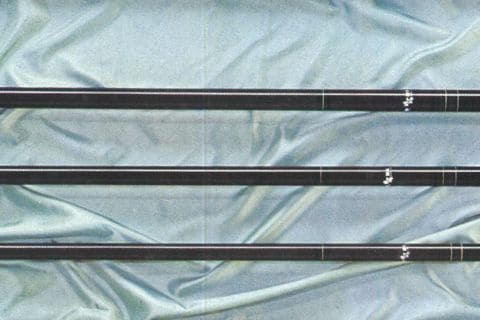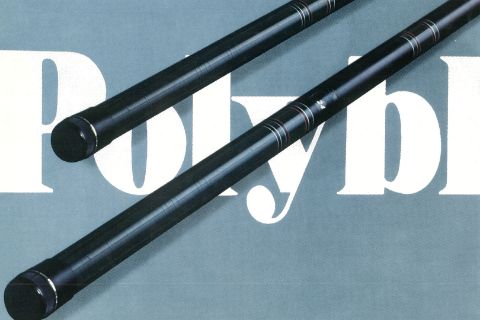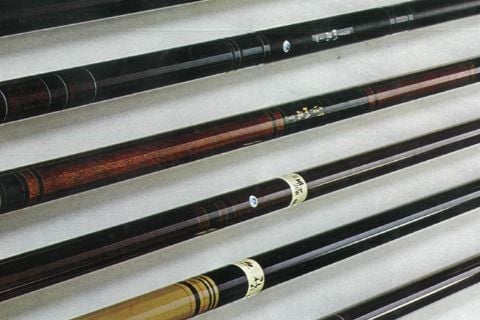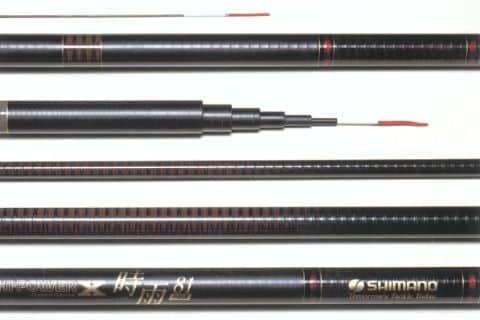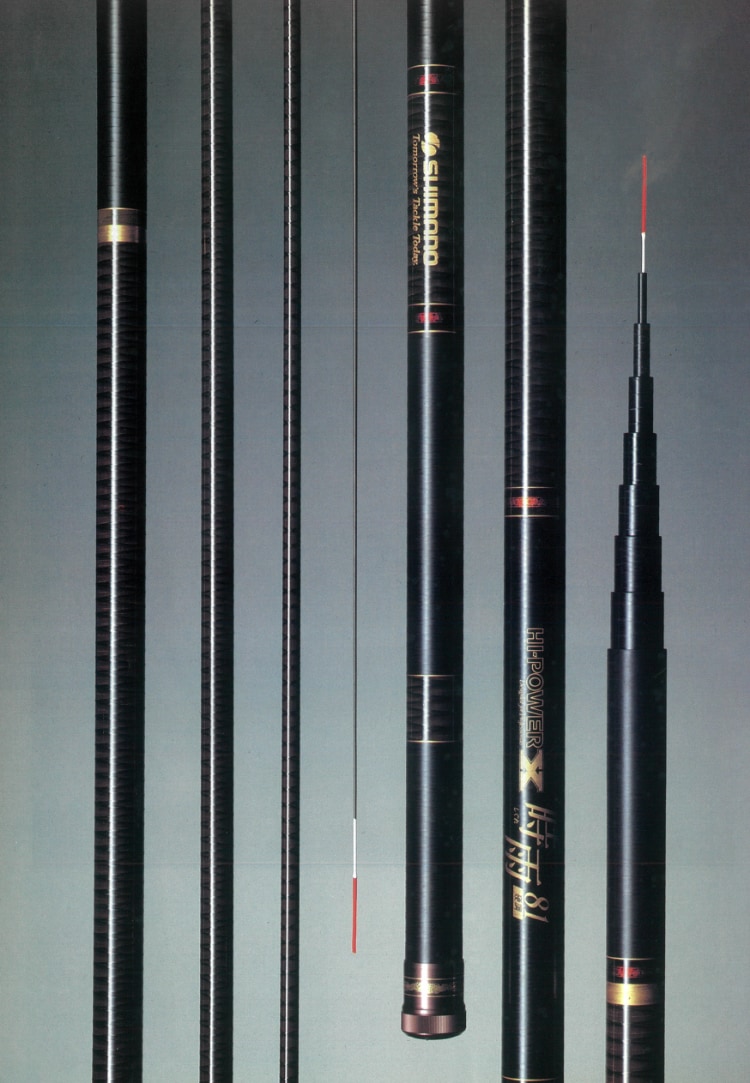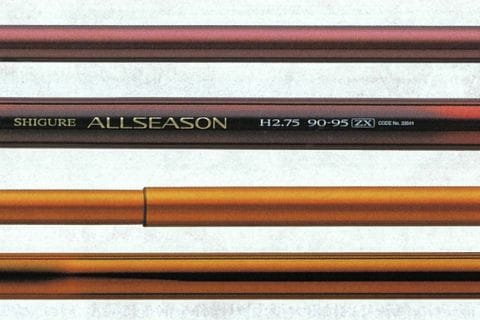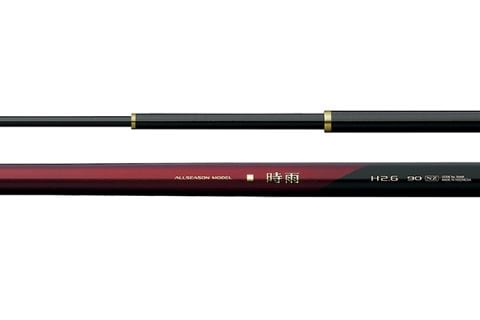STORY
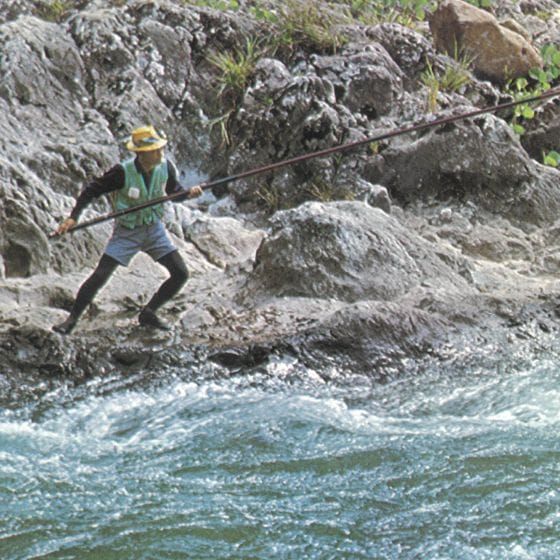
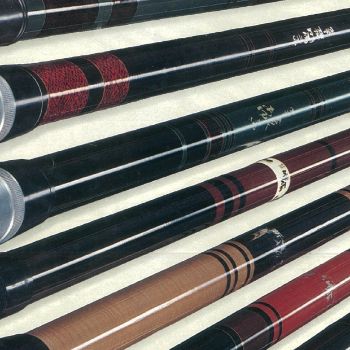
Shimano’s First Rod That Made a Big Hit
Until the 1970s, glass rods made from phenolic resin achieved widespread use for rods for ayu fishing in place of conventional bamboo fishing rods. However, glass rods had a disadvantage, which resulted in increased weight in the manufacturing process. Shimano sought a new material in place of glass. After trial and error, it decided to use polyester resin. In 1973, Shimano released the Shigure rod for ayu fishing made from polyester resin. Shimano was committed to both the material and the structure. Lightness and firmness were achieved by using a bamboo shoot design, whereby the length of each section was reduced from the bottom to the tip of the rod. Shigure was also characterized by the beautiful appearance achieved by polyester. This was Shimano’s first fishing tackle product for which a TV ad was aired. The ad helped Shigure be welcomed by ayu fishing fans with a frenzy. Shigure was the first Shimano rod to become a big hit.
In 1975, Shimano developed Polyblar material, produced by processing Kevlar® fiber, which was also used in space engineering, and glass fiber through composite technology. It released Polyblar Shigure characterized by lightness and high strength. It was evaluated as a reasonable and high-performance rod compared to carbon rods, which were expensive at that time. Subsequently, Shimano also released products featuring refined craft painting, such as Polyblar Urushi Shigure and New Shigure. It delivered products that were highly tasteful and met the needs of ayu anglers in addition to ensuring functionality. In 1976, Shimano developed the second-generation Polyblar, which combined Kevlar® fiber and glass fiber with carbon fiber. The addition of carbon fiber achieved a rod that featured properties close to those of a bamboo fishing rod, but was characterized by smoother bendability and higher firmness and resilience than a bamboo fishing rod.
In 1975, Shimano developed Polyblar material, produced by processing Kevlar® fiber, which was also used in space engineering, and glass fiber through composite technology. It released Polyblar Shigure characterized by lightness and high strength. It was evaluated as a reasonable and high-performance rod compared to carbon rods, which were expensive at that time. Subsequently, Shimano also released products featuring refined craft painting, such as Polyblar Urushi Shigure and New Shigure. It delivered products that were highly tasteful and met the needs of ayu anglers in addition to ensuring functionality. In 1976, Shimano developed the second-generation Polyblar, which combined Kevlar® fiber and glass fiber with carbon fiber. The addition of carbon fiber achieved a rod that featured properties close to those of a bamboo fishing rod, but was characterized by smoother bendability and higher firmness and resilience than a bamboo fishing rod.
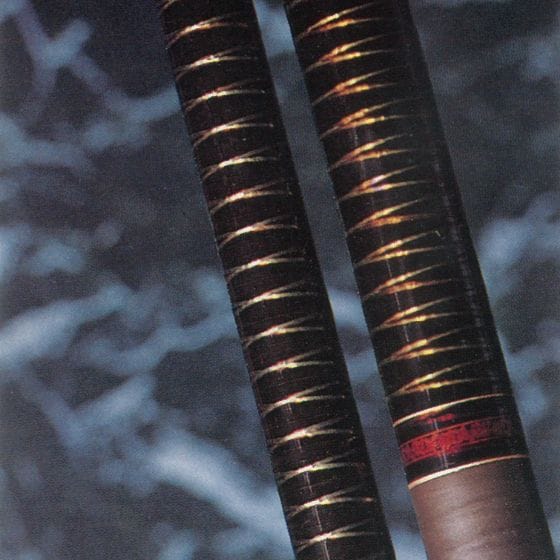
Evolution of Rods for Ayu Fishing Achieved by the New Structure “X Line”
In the latter half of the 1970s, the mainstream rod material shifted from glass fiber to carbon fiber, which was characterized by lightness and strength. Shimano conducted research on a proprietary rod structure using carbon fiber. In 1981, it developed the X Line, which featured carbon tape wound in a cross shape on the outermost layer of the rod. In 1982, the name was changed from the X Line to the Hi-Power X, which was deployed as a series. In 1983, Shimano released Hi-Power X Shigure, a rod for ayu fishing that featured the Hi-Power X. The use of this technology achieved outstanding lightness and high operability and sensitivity. The X Structure became widely known as an icon of Shimano’s high-performance rods.
In 1987, Shimano released Fine Ceramic Shigure. High-performance ceramic fiber further improved the lightness, sensitivity and toughness of Shigure, which had already been highly evaluated. Shigure was recognized as a fishing rod series with high overall performance. Subsequently, Shigure continued to represent the endeavor to integrate tradition with technology for a long period by incorporating the latest functions, such as a zoom mechanism.
Shigure made Shimano rods well known in the industry and became a long-lasting hit due to its huge popularity. Shigure is a renowned fishing rod series that must be mentioned when discussing the history of rods for ayu fishing offered by Shimano, which has been committed to the evolution of technology.
In 1987, Shimano released Fine Ceramic Shigure. High-performance ceramic fiber further improved the lightness, sensitivity and toughness of Shigure, which had already been highly evaluated. Shigure was recognized as a fishing rod series with high overall performance. Subsequently, Shigure continued to represent the endeavor to integrate tradition with technology for a long period by incorporating the latest functions, such as a zoom mechanism.
Shigure made Shimano rods well known in the industry and became a long-lasting hit due to its huge popularity. Shigure is a renowned fishing rod series that must be mentioned when discussing the history of rods for ayu fishing offered by Shimano, which has been committed to the evolution of technology.



